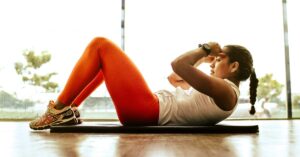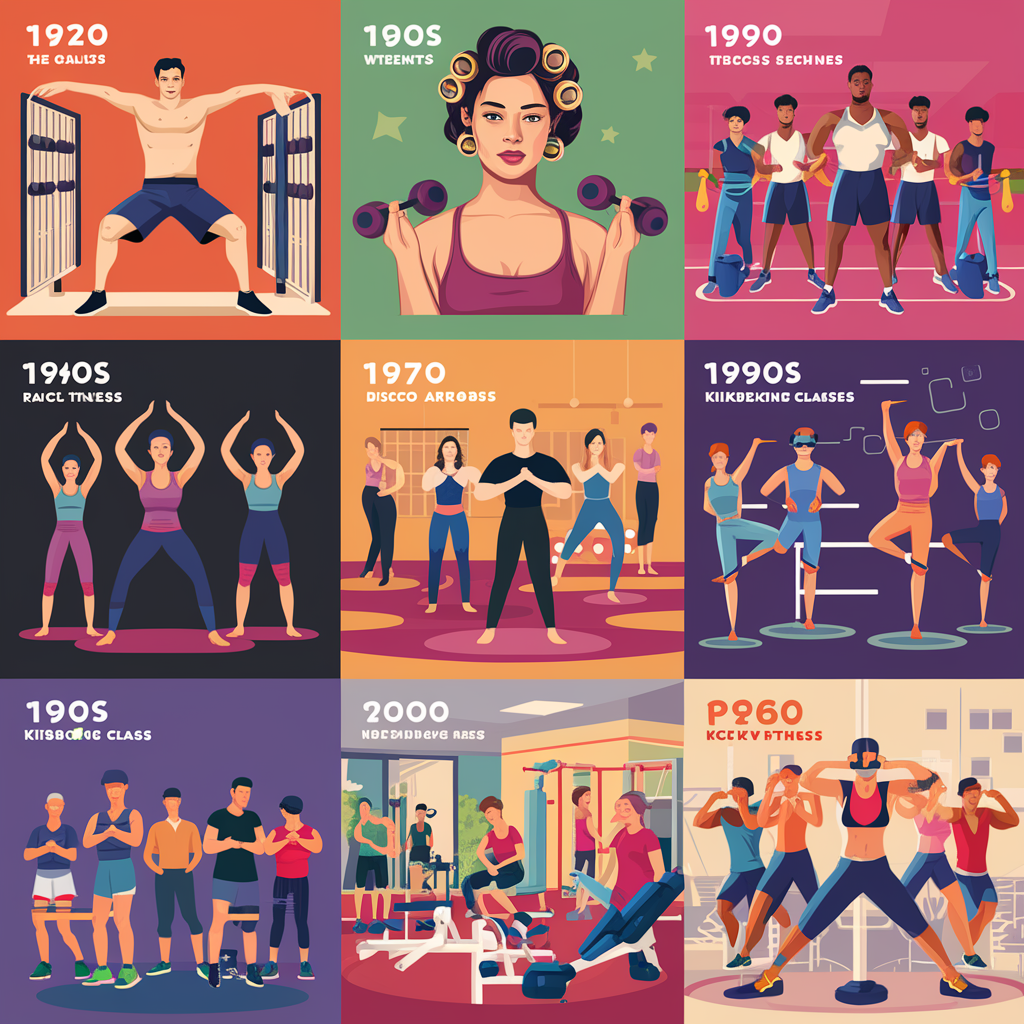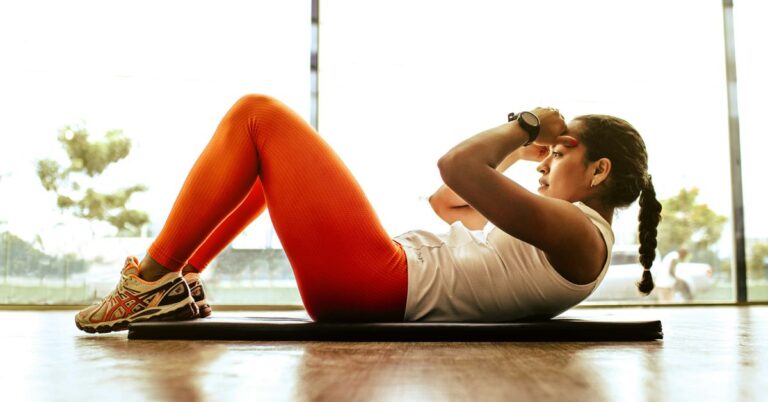The Evolution of Fitness Trends Over the Decades
Fitness. It’s a word that conjures up a myriad of images, from sweat-drenched gym-goers lifting heavy weights to graceful yogis flowing through their sun salutations. But if there’s one thing that’s constant in the world of fitness, it’s change. Over the decades, what we consider ‘fit’ has evolved dramatically, shaped by cultural shifts, technological advancements, and perhaps, the occasional celebrity endorsement. Strap in as we take a journey through the decades, exploring how fitness trends have transformed and what they reveal about our society.
The Roaring Twenties: Jazz, Dance, and the Birth of Modern Fitness
The 1920s were a time of exuberance, marked by jazz music, flapper dresses, and a general sense of liberation. In the realm of fitness, this era saw the rise of dance as a form of exercise. The Charleston and the Shimmy became more than just dance moves; they were a way for people to stay active while having a blast. I can almost picture my grandmother, a young woman back then, twirling around the dance floor without a care in the world—her laughter echoing in the dim light of a speakeasy.
Another significant development was the emergence of physical culture, championed by figures like Charles Atlas. His ads promised a “dynamic tension” workout that could transform skinny boys into muscular men. It’s fascinating to think how these early fitness pioneers laid the groundwork for the gym culture we know today.
The 1930s and 1940s: War and Women in Fitness
As the world plunged into the chaos of World War II, fitness took on a different meaning. For many, staying fit was not just about aesthetics; it was about preparing for service. The government promoted physical fitness as part of a national health initiative. In the U.S., women began engaging in fitness activities more actively, driven by the need to maintain physical strength for factory jobs and war efforts. I remember my history teacher telling us about “Rosie the Riveter,” a symbol of female empowerment—her muscular arm flexing proudly.
Interestingly, this was also the decade when yoga began to gain traction in the West. While yoga had been practiced in India for centuries, it was only during this time that it started to attract the attention of health enthusiasts in the U.S. and Europe. The fusion of Eastern mindfulness with Western exercise was just beginning.
The 1950s: The Age of Aerobics
Fast forward to the 1950s, and we find ourselves in a post-war world eager to return to normalcy. This era witnessed the birth of modern aerobics, thanks in part to the work of Dr. Kenneth Cooper, who developed the concept of aerobic exercise. His book, “Aerobics,” published in 1968, laid the foundation for a new fitness philosophy that emphasized cardiovascular health.
Television also played a pivotal role during this decade. Fitness stars like Jack LaLanne became household names, promoting exercise on morning TV shows. Picture it: households gathering around the television, mimicking LaLanne’s exercises while sipping their orange juice. It was a simpler time, and the mantra was “Just do it”—well, before Nike coined it, of course.
The 1960s: The Rise of Yoga and the Counterculture Movement
In the 1960s, as counterculture movements blossomed, yoga began to gain wider acceptance. No longer just a curiosity, yoga studios started popping up across cities, and people began embracing not only the physical aspects but also the spiritual components of the practice. You could say this was the decade when fitness became holistic—mind, body, and spirit. I remember my college roommate, a budding yogi, always trying to convince me to join her for a session. Spoiler alert: I never did, but I admired her dedication!
The 1960s also marked the start of running as a popular pastime. Thanks to figures like Jim Fixx, who published “The Complete Book of Running,” jogging became a fitness craze. Suddenly, people were donning their sneakers, hitting the pavement, and feeling the burn—or at least that’s what they claimed as they trudged past me on my leisurely strolls.
The 1970s: The Fitness Revolution and Jane Fonda
Ah, the 1970s—a decade that truly transformed fitness into a cultural phenomenon. The fitness revolution kicked off in earnest, and gyms started to appear everywhere. The iconic Jane Fonda released her first workout video in 1982, but the seeds were planted in the ’70s. Her commitment to fitness was so infectious that it spurred an entire generation of women to start exercising. Her influence was palpable. I dare say, the leg warmers and headbands that followed were nothing short of revolutionary!
Moreover, this was the era when various forms of exercise began to diversify. From jazzercise to step aerobics, the options exploded. It struck me that this wasn’t just about getting fit anymore; it was about having fun and connecting with others. Group classes became a social event, and fitness was no longer a solitary endeavor.
The 1980s: The Boom of Bodybuilding and High-Impact Workouts
With the ’80s came the rise of bodybuilding, and suddenly, bulging biceps and chiseled abs became the ultimate goals. Arnold Schwarzenegger emerged as a cultural icon, and the sport gained a massive following. Gym culture became synonymous with dedication, discipline, and, let’s be honest, a hefty dose of vanity. It’s almost comical to think of the obsession with muscle size and definition. I can still hear my uncle grunting in the garage while lifting weights with all the elegance of a walrus.
This decade also saw the explosion of high-impact aerobics, with instructors using vibrant music and bright outfits to motivate participants. Jane Fonda’s influence lingered, but now it was all about how high you could jump and how low you could squat. Fitness became a spectacle, a show, and to some extent, a fashion statement. Who could forget those neon leotards? (I certainly can’t, though I wish I could.)
The 1990s: The Rise of the Home Workout and Yoga’s Resurgence
As the ’90s rolled around, the fitness landscape continued to shift. With the advent of home video technology, fitness enthusiasts could now work out in the comfort of their living rooms. Companies like Beachbody and firms such as Richard Simmons and Billy Blanks (with his Tae Bo) provided an array of options for those who preferred to sweat in private. I can’t recall how many times I tried to keep up with Richard Simmons’ energetic antics, only to end up sprawled on the floor gasping for air.
Yoga was also experiencing a resurgence, but this time it was more mainstream. Celebrities like Madonna and Sting were touting the benefits of yoga, making it more appealing to the masses. Suddenly, yoga wasn’t just for the hippies anymore; it became a status symbol. As I watched my friends post pictures of their downward dogs on social media, I couldn’t help but chuckle at how far we’d come.
The 2000s: The Era of Personal Training and Functional Fitness
The 2000s ushered in the era of personal training. People began to realize that the path to fitness didn’t have to be a solo journey. Personal trainers became the new fitness heroes, guiding clients through workouts tailored to their individual needs. It was a time when fitness shifted from a one-size-fits-all approach to a more personalized experience. (I remember my first session with a trainer—she had me doing exercises I’d never even heard of! Let’s just say I discovered muscles I didn’t know existed.)
Functional fitness also gained traction, focusing on exercises that mimic real-life movements and enhance overall body function. Think of it as training for life rather than just for aesthetics. This approach emphasized strength and conditioning, preparing individuals for everyday activities. It was refreshing to see people prioritize health and functionality over purely aesthetic goals. Perhaps it was a reflection of a broader cultural shift towards wellness.
The 2010s: Technology Meets Fitness
As we moved into the 2010s, technology began to revolutionize fitness in ways we had yet to imagine. The rise of fitness apps and wearables put data at the forefront of our workouts. Suddenly, it wasn’t enough to just run a mile; we had to track our heart rates, calories burned, and even our sleep patterns. I can still recall the excitement when I first strapped on a fitness tracker—only to realize my daily step count was woefully unimpressive. (Who knew walking to the fridge didn’t count as cardio?)
Group classes also evolved, with the emergence of spin studios and high-intensity interval training (HIIT). These classes became all the rage, combining music, community, and challenging workouts. It was fascinating to see how people gravitated towards these intense, time-efficient workouts. It seems that the mantra of “no pain, no gain” was more prevalent than ever.
The 2020s: A Shift Towards Wellness and Inclusivity
Now, as we navigate through the 2020s, it’s clear that the focus has shifted towards overall wellness, mental health, and inclusivity in fitness spaces. The pandemic has reshaped our understanding of exercise, with many turning to home workouts, virtual classes, and outdoor activities. Fitness challenges have become a way to connect, even when we’re physically apart. It’s heartwarming to see how communities have banded together, offering online classes and support groups.
Inclusivity has also become a key component of fitness culture. From adaptive fitness programs to body-positive movements, there’s a growing recognition that fitness should be accessible to everyone, regardless of shape, size, or ability. The narrative has shifted from “fit is a size” to “fit is a feeling.” This evolution is not just refreshing; it’s necessary. (I can’t help but smile when I see people of all backgrounds and abilities coming together to embrace fitness.)
Looking Ahead: What’s Next in Fitness?
As we glance into the future, one can only wonder what the next wave of fitness trends will be. Will virtual reality workouts become commonplace? Will we see a return to group exercises as social gatherings become more normalized? Or perhaps, we’ll witness a further merging of technology and wellness, with AI-driven personal trainers guiding us through workouts tailored to our every need. It’s an exciting time to be engaged in fitness, and the possibilities are endless.
In the end, the evolution of fitness trends over the decades tells us more than just what exercises are popular at any given time. It reflects our cultural values, societal changes, and our collective understanding of health and wellness. Whether we’re dancing in the 1920s or tracking our steps in the 2020s, the pursuit of fitness remains a constant—a thread woven through the fabric of our lives.
So, as you lace up your sneakers and head out for a run, or perhaps roll out your yoga mat, remember that you’re part of a long and fascinating history—a history that’s still being written, one workout at a time.









